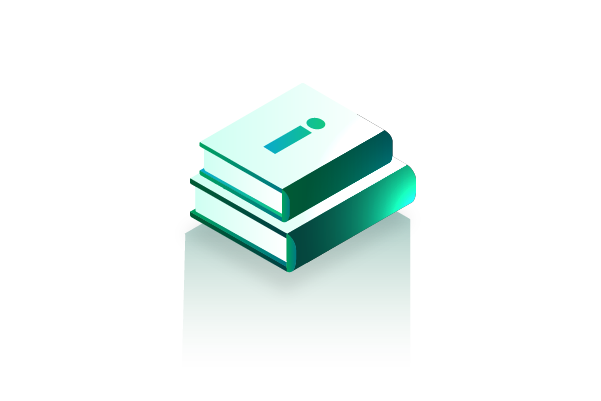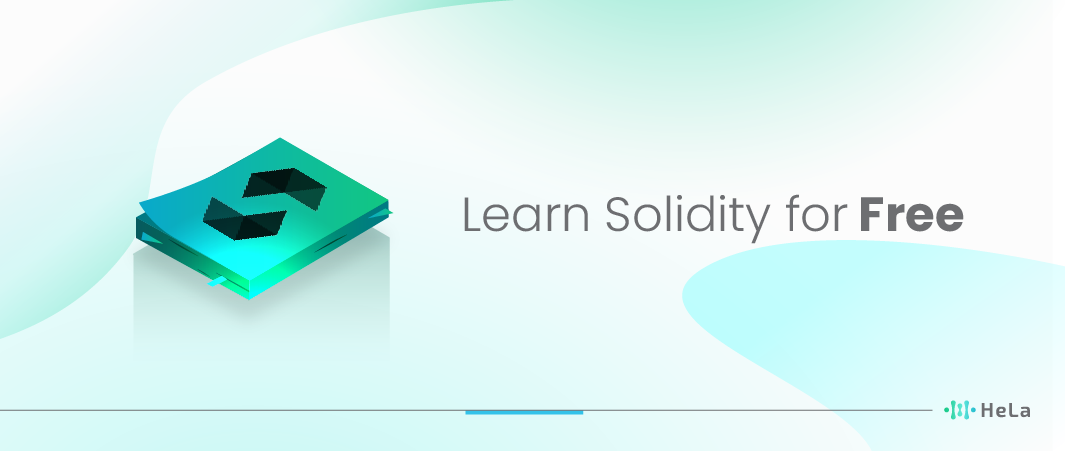Solidity is a powerful programming language designed for building decentralized applications (DApps) and smart contracts on the Ethereum blockchain. It’s vital in the world of blockchain, allowing developers to create self-executing smart contracts with predefined rules. Whether you’re new to DApps or an experienced programmer, this guide caters to all skill levels. We’ll cover Solidity basics like variables, functions, and data types, progressing to advanced topics such as inheritance, libraries, and security best practices. You’ll find step-by-step tutorials and examples to support your learning. By the end, you’ll have the skills to create smart contracts and dive into blockchain development.
Remember, the blockchain field is ever-evolving, so stay curious and keep learning. This guide provides a strong Solidity foundation, but the blockchain world offers endless possibilities for those who innovate and stay dedicated. Let’s explore this journey together with Solidity as your trusted companion.
Why Learn Solidity?
Before we dive into the nitty-gritty of Solidity, it’s essential to understand why it’s worth your time and effort. Solidity is the go-to programming language for developing decentralized applications (DApps) and smart contracts on the Ethereum blockchain. With the explosive growth of blockchain technology, learning Solidity opens up a world of opportunities. Here’s why learning Solidity is valuable:
Key to Ethereum Development
Solidity is the cornerstone for developing on Ethereum, one of the largest and most influential blockchain platforms. By mastering Solidity, developers gain direct access to a vast ecosystem, enabling them to build on a platform that’s widely recognized for its robustness, security, and innovative contracts.
Growing Demand for DApps
The surge in decentralized applications marks a shift in how we interact with online services. Solidity is pivotal in this transformation, providing the tools to create applications that are more secure, transparent, and resistant to censorship than traditional web applications. This opens up new avenues for innovation in various sectors, from finance to social media.
Smart Contract Creation
Solidity is essential for writing smart contracts, which are automated agreements that run when predetermined conditions are met. These contracts are revolutionizing many sectors by removing intermediaries, reducing costs, and increasing efficiency. Understanding Solidity allows you to create complex contracts for a multitude of applications.
Innovative Technology Sector
The blockchain sector is a leading edge of technological progress. Learning Solidity places you at this frontier, offering opportunities to work with cutting-edge technologies and concepts like decentralized finance (DeFi), non-fungible tokens (NFTs), and more.
High Demand for Blockchain Experts
As blockchain technology permeates various industries, the need for skilled professionals familiar with Solidity is skyrocketing. This demand spans not just the tech sector, but also finance, healthcare, real estate, and government, presenting diverse career opportunities.
Financial Incentives
The blockchain industry, particularly the DeFi sector, often offers significant financial incentives for proficient Solidity developers. This can include high salaries, bonuses, and even profit-sharing in successful projects, making it a financially rewarding skill.
Community and Support
The Solidity community is vibrant and supportive, offering a wealth of resources for learners. This includes extensive documentation, forums, online courses, and active discussion groups. This community support is invaluable for beginners and experienced developers alike.
Versatility Across Industries
Blockchain’s versatility means that Solidity skills are not confined to one industry. Whether it’s ensuring the integrity of supply chains, revolutionizing healthcare data management, or innovating in the real estate market, Solidity skills are increasingly relevant across various sectors.
Empowering Decentralization
Learning Solidity is more than just acquiring a technical skill; it’s about embracing the ethos of decentralization. By developing decentralized applications and smart contracts, you contribute to a more equitable digital future, reducing reliance on centralized authorities and promoting user empowerment.
Future-Proofing Your Skills
As our world becomes more interconnected and reliant on digital infrastructure, blockchain will play a crucial role. By learning Solidity now, you’re future-proofing your skills, ensuring you remain relevant and adaptable in a rapidly evolving digital landscape.
Also Read: Scalable Layer 1 Solutions: Innovation and Challenges
Getting Started with Solidity

To begin with Solidity, a programming language primarily used for writing smart contracts on the Ethereum blockchain, you’ll need to follow a few essential steps. Here’s a quick guide to get you started:
1. Understand the Basics of Blockchain and Ethereum
Before diving into Solidity, it’s crucial to have a basic understanding of blockchain technology and specifically Ethereum, as Solidity is used for creating decentralized applications on the Ethereum blockchain.
2. Set Up Your Development Environment:
- Install Node.js: Solidity development often requires Node.js. You can download it from the official Node.js website.
- Choose an Integrated Development Environment (IDE): Popular choices for Solidity development include Remix, a web-based IDE, and Visual Studio Code with Solidity extensions.
- Install Truffle Suite: Truffle is a development framework for Ethereum that makes writing and testing smart contracts easier. It can be installed via npm (Node Package Manager).
3. Learn Solidity Basics
- Syntax and Structure: Familiarize yourself with the syntax and structure of Solidity, which is somewhat similar to JavaScript.
- Basic Concepts: Understand key concepts like smart contracts, gas, transactions, and the Ethereum Virtual Machine (EVM).
4. Write Your First Smart Contract
Start Simple: Begin with a basic contract, such as a “Hello World” program in Solidity.
Testing: Use Truffle for compiling, migrating, and testing your contract.
5. Experiment with Advanced Features
- As you get comfortable, explore advanced features like inheritance, interfaces, and importing other contracts.
6. Practice and Build Projects
The best way to learn is by doing. Start with small projects and gradually build more complex applications.
7. Join the Community
Engage with the Solidity community through forums, social media, and attending meetups or conferences.
8. Stay Updated
Solidity is an evolving language. Keep yourself updated with the latest changes and improvements in the language and Ethereum ecosystem.
Remember, like any programming language, learning Solidity requires patience and practice. Don’t hesitate to seek help from the community when you’re stuck, and most importantly, enjoy the learning process!
Solidity Basics

Solidity is a high-level programming language used primarily for writing smart contracts on various blockchain platforms, most notably Ethereum. It’s designed to be easy to understand for those who are already familiar with programming, especially in JavaScript. Here are some key basics of Solidity:
- Data Types: Solidity has various data types similar to other programming languages. These include integers (int for signed integers, uint for unsigned integers), boolean (bool), strings (string), and more complex types like arrays and structs.
- Variables: Variables in Solidity can be state variables, stored on the blockchain, or local variables, existing only during function execution. There are also special global variables that provide information about the blockchain, like msg.sender.
- Functions: Functions are the primary way of executing code and logic in Solidity. They can read and modify the contract’s state. Functions can be public, private, internal, or external, defining their visibility and accessibility.
- Control Structures: Solidity supports control structures common in other languages, such as if-else statements, loops (for, while), and error handling (require, revert, assert).
- Visibility Specifiers: Functions and state variables have visibility specifiers. For example, public functions are part of the contract interface, while private ones are not accessible outside the contract.
- Modifiers: Function modifiers can be used to change the behavior of functions. For example, a modifier can be used to restrict access or check preconditions.
- Events: Events allow contracts to communicate that something has happened on the blockchain, which can be picked up by external applications or interfaces.
- Inheritance: Solidity supports inheritance, allowing contracts to inherit properties and functions from other contracts.
- Interfaces and Libraries: Interfaces can define how to interact with other contracts, and libraries provide reusable code.
- Error Handling: Solidity provides ways to handle errors such as require, revert, and assert which are used to impose conditions and throw exceptions if those conditions are not met.
Solidity is constantly evolving with updates to its syntax and features, aiming to improve security and efficiency in smart contract development. Understanding these basics is crucial for anyone looking to delve into developing applications on Ethereum or similar blockchain platforms.
Also Read: Crypto Market Sentiment: Impact on Cryptocurrency Valuations
Advanced Solidity Concepts
As you gain confidence in your Solidity skills, we’ll explore more advanced topics, including inheritance, modifiers, events, and error handling. While these may sound complex, our approach will simplify these concepts, making them accessible even to those new to programming.
Inheritance
This concept is not unique to Solidity; it’s a fundamental part of object-oriented programming. In Solidity, inheritance allows a contract to acquire properties and behaviors from another contract. This is useful for creating a hierarchical structure of contracts, making your code more reusable and easier to manage.
Modifiers
Modifiers in Solidity are used to change the behavior of functions in a declarative way. For example, you might use a modifier to add a requirement that must be met before the function can be executed (like requiring that the sender of a transaction must be the owner of the contract).
Events
Events allow Solidity contracts to communicate that something has happened on the blockchain. These can be listened to by the external applications or interfaces. For instance, a contract might emit an event to signal that a transaction has been completed or a state has been changed.
Error Handling
Solidity provides error handling mechanisms like require, revert, and assert. These are used to validate conditions and handle errors. For example, require is often used to ensure that certain conditions are true before executing a function, and if they’re not, the transaction is reverted.
These advanced concepts in Solidity play a critical role in writing efficient, secure, and reliable smart contracts on the Ethereum blockchain. As you delve into these topics, you’ll find your ability to create complex and functional decentralized applications significantly enhanced. Remember, practice is key, so experiment with these concepts in your projects to gain a deeper understanding.
Building Real-World Projects

When it comes to mastering any programming language, theory alone can only take you so far. The best way to truly grasp the intricacies of a language like Solidity, which is used for developing decentralized applications (DApps) and smart contracts on blockchain platforms like Ethereum, is by applying your knowledge to real-world projects.
This section will provide you with a comprehensive guide to building your own DApps and smart contracts using Solidity. This is to empower you with practical skills, ensuring that you not only understand the language’s syntax and concepts but can also use it effectively to create functional blockchain-based applications.
- Apply Theoretical Knowledge: Put into practice the foundational concepts and principles you’ve learned about Solidity and blockchain technology.
- Gain Problem-Solving Skills: Learn how to analyze real-world problems and design solutions using Solidity. This includes addressing issues related to security, efficiency, and usability in DApps and smart contracts.
- Build a Portfolio: As you complete these projects, you’ll have tangible examples of your work to showcase to potential employers or collaborators. Building a portfolio of real-world projects is a valuable asset in the world of blockchain development.
- Learn Best Practices: Discover industry best practices, coding standards, and design patterns that will make your Solidity code more robust and maintainable.
- Understand the Ecosystem: Beyond Solidity, you’ll also become familiar with the broader blockchain ecosystem, including tools, libraries, and development environments that are essential for creating and deploying DApps and smart contracts.
Conclusion
In conclusion, learning Solidity in 2023 doesn’t have to be an intimidating or overly complex endeavor. With this comprehensive guide, you have a resource at your fingertips that simplifies the learning process and enables you to embark on a rewarding journey into blockchain development.
Learning Solidity opens doors to a world of opportunities in blockchain development. As the technology continues to evolve and gain mainstream acceptance, the demand for skilled Solidity developers is on the rise. By mastering this language, you position yourself for a promising career in a cutting-edge field.
Remember that learning Solidity is an ongoing process. The blockchain space is dynamic, and there’s always something new to discover. Join online communities, attend meetups, and explore additional resources to stay updated and deepen your expertise.
Now is the perfect time to start your journey into Solidity. With the right resources and a commitment to learning, you can unlock the potential of blockchain technology. Begin with the basics, take your time to practice, and before you know it, you’ll be developing your own decentralized applications and smart contracts.
Disclaimer: The information provided by HeLa Labs in this article is intended for general informational purposes and does not reflect the company’s opinion. It is not intended as investment advice or recommendations. Readers are strongly advised to conduct their own thorough research and consult with a qualified financial advisor before making any financial decisions.

I am Carina Caringal, a technical writer specializing in blockchain engineering concepts, decentralized systems, crypto infrastructure, and Web3 technologies. My work focuses on analyzing and translating complex technical mechanisms into precise, structured, and insightful content for both developers and non-technical readers who want a deeper understanding of the decentralized ecosystem.
My background in blockchain and cryptocurrency is rooted in years of independent research, continuous learning, and hands-on exploration across multiple protocols and network architectures. I study the underlying mechanics of distributed ledger technology, from consensus algorithms and smart contract logic to network scalability, security models, cryptographic principles, and interoperability frameworks. This technical foundation shapes the way I approach every article, ensuring accuracy, depth, and relevance.
- Carina Caringalhttps://helalabs.com/blog/author/carina-caringal/
- Carina Caringalhttps://helalabs.com/blog/author/carina-caringal/
- Carina Caringalhttps://helalabs.com/blog/author/carina-caringal/
- Carina Caringalhttps://helalabs.com/blog/author/carina-caringal/

